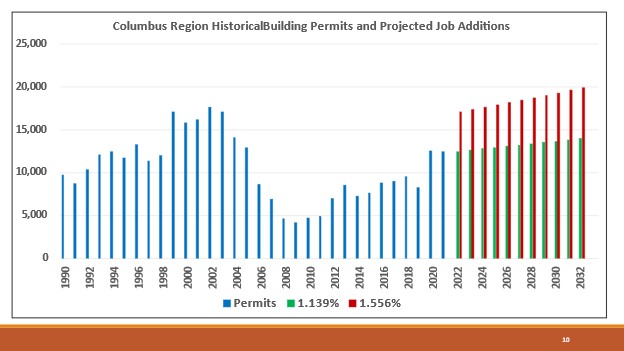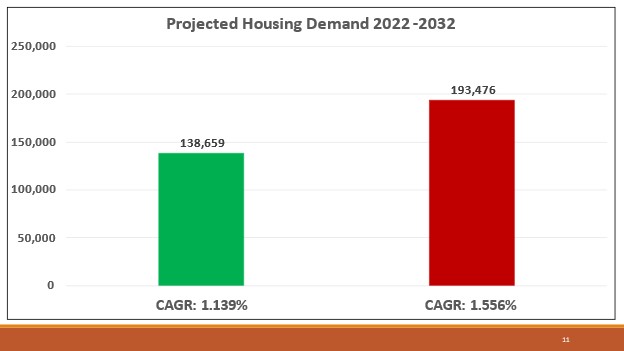The growth in job creation in Central Ohio creates a substantial opportunity for residential development in Central Ohio. In fact, meeting the demand for residential development in Central Ohio may be one of the larger public policy challenges for Central Ohio as the coming decades of large-scale growth occur. Columbus is one of the top 10 housing markets best positioned for growth in 2022, according to rankings by Realtor.com, and they predict sales will surge by 13.7% and prices will grow by 6.3% this year. The Zillow Home Value Index (ZHVI) for Columbus is $241,472 through May 2022, and home values in Columbus increased by 17.3% over the last year according to Roofstock.com. Over the past five years, home values in Columbus have increased by more than 85%, and the median listing price of a single-family home in Columbus is $240,000 based on the most recent report from Realtor.com (April 2022). No matter the measure, Central Ohio is primed for residential growth and the community desperately needs it to meet its economic potential. The availability of workforce housing is a critical issue the Central Ohio marketplace faces.

As the Building Industrial Association of Central Ohio has recognized and the chart above illustrates, the development of housing in Central Ohio is not keeping pace with the job creation now or in the recent past. The BIA of Central Ohio conducted a recent Housing Need Assessment that determined that Central Ohio must build more than 14,000 housing units per year to accommodate an estimated 500,000 new jobs and 1 million new residents by 2050. But Central Ohio is currently building about 8,000 housing units per year, meaning there is a shortfall of about 6,000 units or 43%. This study was completed prior to the Intel and Hyperion project announcements and the table below illustrates the current residential demand in the Central Ohio marketplace which is substantial—totally a demand for nearly 200,000 by 2032.

The Central Ohio housing market, under any measure, is not keeping up with the demand for housing, which creates a challenge for economic development leaders and an opportunity for residential developers.